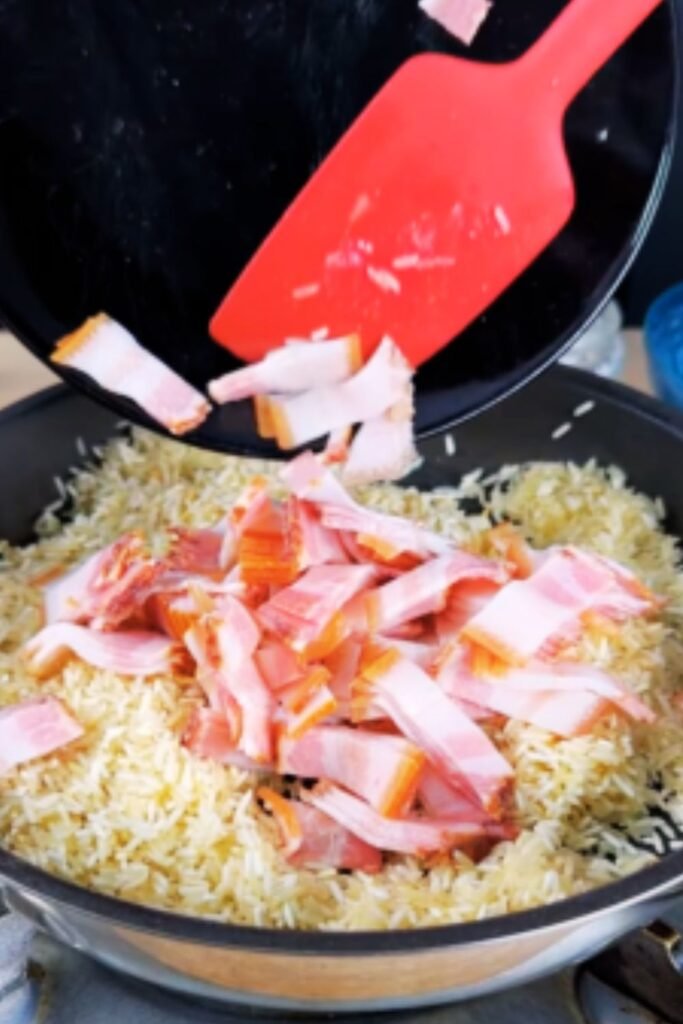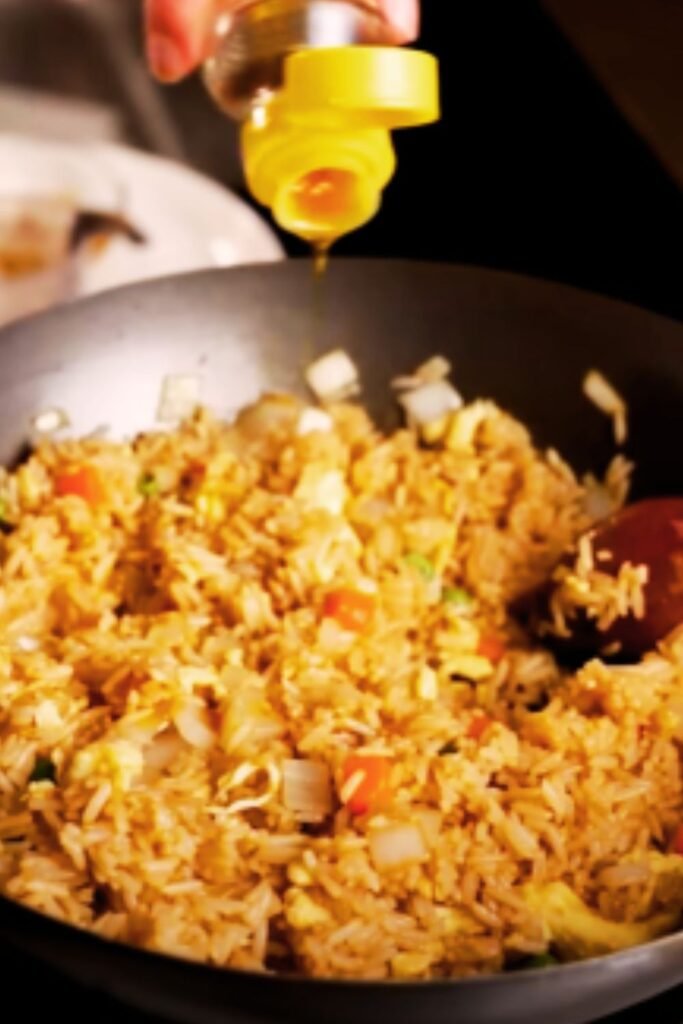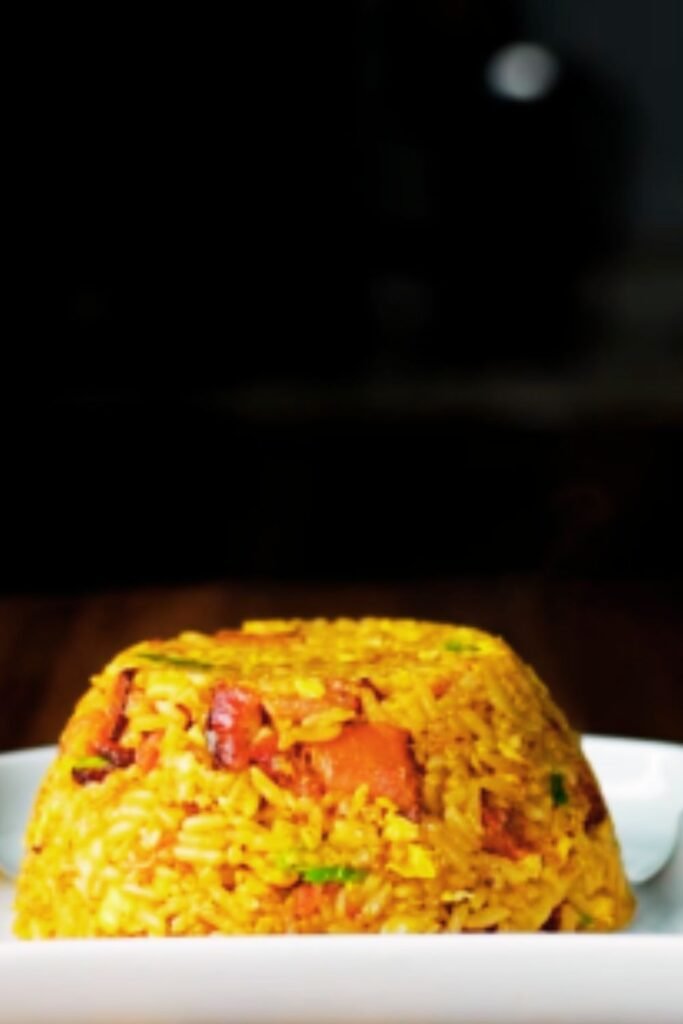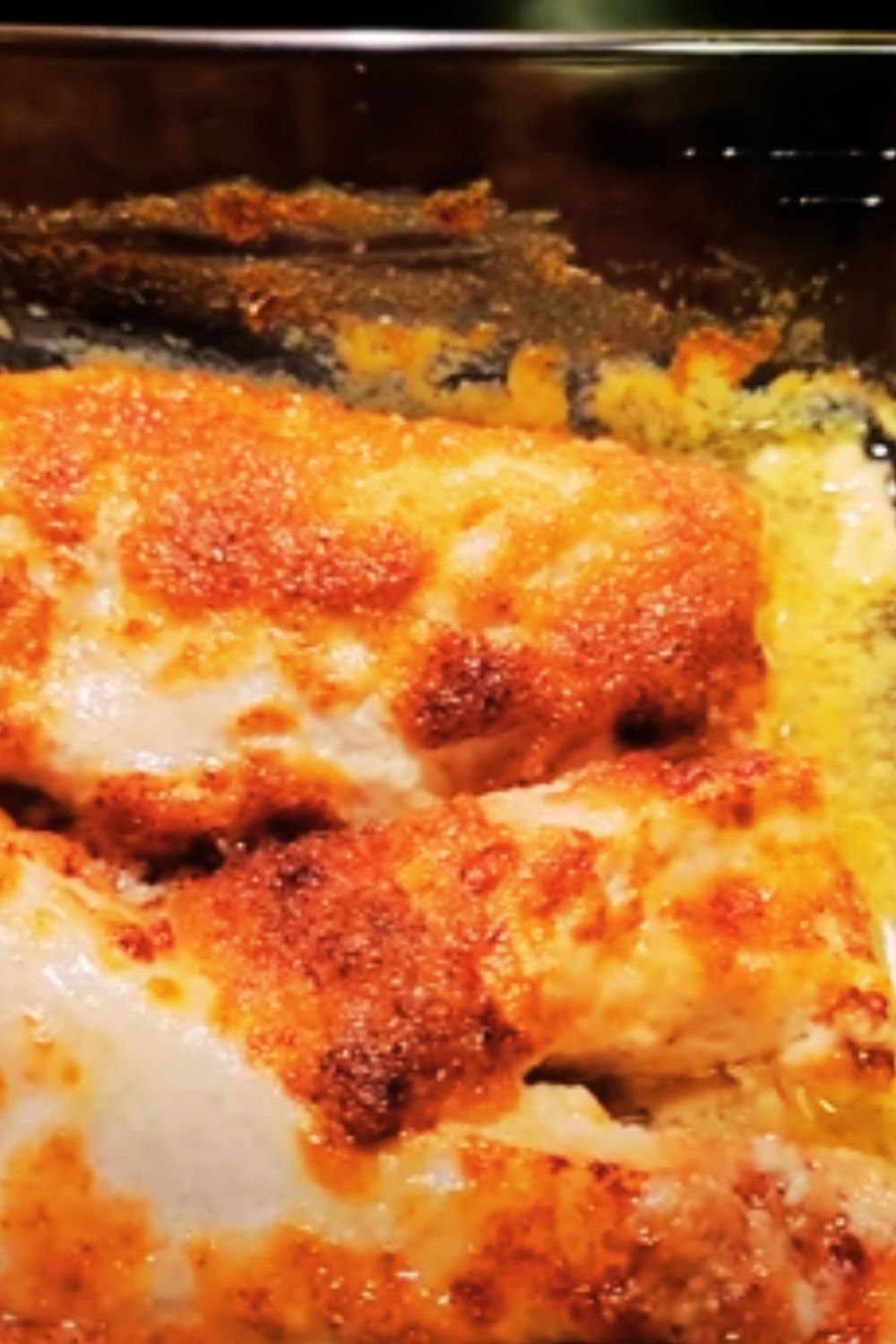There’s something magical about the aroma of bacon sizzling in a pan that instantly makes my mouth water. Combine that with the comforting familiarity of fried rice, and you’ve got yourself a winning combination that transforms ordinary leftovers into an extraordinary meal. I’ve been perfecting my bacon fried rice recipe for years, and today I’m excited to share with you my ultimate version that balances savory, smoky, and umami flavors in every bite.

What I love most about this dish is its incredible versatility. Whether you’re looking to use up leftover rice from yesterday’s takeout, need a quick weeknight dinner, or want to impress friends with a seemingly fancy but actually simple dish, bacon fried rice delivers every time. Plus, the combination of crispy bacon bits, fluffy eggs, and colorful vegetables creates a meal that’s as visually appealing as it is delicious.
In this article, I’ll walk you through everything you need to know to create restaurant-quality bacon fried rice right in your own kitchen. From selecting the right ingredients to mastering the proper technique, you’ll soon be whipping up this crowd-pleaser like a pro. Let’s get cooking!
The Perfect Rice: Foundation of Your Dish
Before we dive into the complete recipe, let’s talk about what makes exceptional fried rice. The secret starts with the rice itself.
Cold Rice Is Key
Day-old refrigerated rice isn’t just a convenient way to use leftovers—it’s actually crucial for achieving that perfect fried rice texture. Why? Fresh rice contains too much moisture and tends to clump and become mushy when fried. Cold rice, on the other hand, has had time to dry out slightly, allowing each grain to separate and crisp up beautifully when it hits the hot pan.
I always try to plan ahead and cook rice the day before I want to make fried rice. If you’re in a pinch, though, there’s a hack: spread freshly cooked rice on a baking sheet in a thin layer and place it in the refrigerator for 1-2 hours. This speeds up the cooling and drying process, giving you decent results even without overnight refrigeration.
Rice Varieties Matter
Not all rice is created equal when it comes to fried rice. Here’s a quick reference for choosing the right type:
| Rice Type | Characteristics | Best For |
|---|---|---|
| Jasmine | Long grain, fragrant, slightly sticky | Traditional Asian-style fried rice |
| Basmati | Long grain, distinct aroma, separate grains | Lighter, fluffier fried rice |
| Medium grain | Moderate stickiness, good texture | All-purpose fried rice |
| Short grain | Very sticky, chewy | Not ideal for fried rice |
| Brown rice | Nutty flavor, firmer texture | Healthier version, needs more oil |
I personally prefer jasmine rice for its aromatic quality and the way it absorbs flavors while maintaining its structure. However, whatever you have on hand will work—just remember that the texture will vary slightly based on your choice.
The Bacon Component: Selecting and Preparing
Now, let’s talk about the star of our show: bacon!
Choosing Your Bacon
The type of bacon you select will significantly impact the final flavor of your dish:
| Bacon Type | Flavor Profile | Best Used When |
|---|---|---|
| Center cut | Leaner, meatier strips | You want a lighter version |
| Thick-cut | Chewier, more pronounced pork flavor | You want substantial bacon pieces |
| Applewood smoked | Sweet, fruity smokiness | You want a subtle sweetness |
| Hickory smoked | Bold, hearty smoke flavor | You want a more robust dish |
| Peppered bacon | Spicy, peppery kick | You want added heat without extra ingredients |
I typically reach for thick-cut bacon for my fried rice. The substantial pieces stand up well to stir-frying and provide satisfying bites of smoky goodness throughout the dish. However, if you prefer a more subtle bacon presence, regular sliced bacon works perfectly fine too.
Rendering the Fat: A Crucial Step
One of the secrets to exceptional bacon fried rice is using the rendered bacon fat to cook the rest of your ingredients. This infuses everything with that irresistible bacon flavor.
Start by cutting your bacon into small pieces about 1/4 to 1/2 inch wide. Add them to a cold wok or large skillet, then turn the heat to medium. This slow approach allows the fat to render out gradually, giving you crispy bacon bits and plenty of flavorful fat for cooking.
Be patient during this step—rushing it can result in unevenly cooked bacon. Once the pieces are crisp and golden brown, remove them with a slotted spoon and set aside, leaving the rendered fat in the pan. This bacon fat is liquid gold and will be the foundation of flavor for your entire dish.

Essential Ingredients: Building Layers of Flavor
While bacon and rice form the foundation of this dish, the supporting ingredients are equally important for creating a well-balanced meal.
The Aromatics
Every great fried rice starts with aromatic vegetables that create a flavor base:
- Garlic: 3-4 cloves, minced. Provides a pungent, aromatic quality
- Ginger: 1 tablespoon, freshly grated. Adds a spicy, warming note (optional but recommended)
- Onion: 1 medium, diced. Creates sweetness and depth
- Green onions: 4-5 stalks, sliced (white and green parts separated). Offers a fresh, mild onion flavor
These aromatics should be sautéed in the rendered bacon fat until fragrant and slightly softened—usually about 2-3 minutes. This step is crucial for developing the foundational flavor of your dish.
The Vegetables
The beauty of fried rice is its adaptability. You can use practically any vegetables you have on hand, but here are some that work particularly well with bacon:
- Carrots: 1 medium, diced. Adds sweetness and color
- Peas: 1/2 cup, fresh or frozen. Provides bursts of sweetness and bright color
- Corn kernels: 1/2 cup, fresh or frozen. Gives sweetness and texture
- Bell peppers: 1 medium, diced. Contributes crunch and vibrant color
- Mushrooms: 1 cup, sliced. Creates umami depth that complements bacon
The key is to dice your vegetables relatively small (about 1/4 to 1/2 inch pieces) so they cook quickly and integrate well with the rice. I typically use carrots, peas, and corn for a classic combination, but feel free to experiment based on what you have available.
The Protein Element
While bacon already provides protein, adding eggs creates a richer, more balanced dish:
- Eggs: 2-3 large, beaten. Adds richness, protein, and binds ingredients together
Some people prefer to cook the eggs separately, then cut them into strips and add them back to the dish. I find it simpler and just as effective to push all ingredients to the side of the wok, pour the beaten eggs into the cleared space, and scramble them directly in the pan before mixing everything together.
The Seasonings: Balancing Your Flavors
The final layer of flavor comes from carefully selected seasonings that enhance rather than overpower the bacon.
Essential Sauces
- Soy sauce: 2-3 tablespoons. Provides salt and umami
- Oyster sauce: 1 tablespoon. Adds complex sweetness and depth (can substitute hoisin sauce)
- Sesame oil: 1 teaspoon, added at the end. Contributes a nutty aroma and flavor
Additional Flavor Enhancers
- White pepper: 1/4 teaspoon. Offers a clean, sharp heat without changing the color
- MSG: 1/4 teaspoon (optional). Enhances umami flavors
- Sugar: 1/2 teaspoon. Balances the salt and creates caramelization
- Rice vinegar: 1 teaspoon. Adds brightness and cuts through richness
I always mix my liquid seasonings in a small bowl before adding them to the wok. This ensures even distribution and prevents any one area from becoming too salty.
The Complete Recipe: Putting It All Together
Now that we’ve covered all the components, let’s combine everything into a comprehensive recipe you can follow step by step.
Bacon Fried Rice Recipe
Prep Time: 15 minutes
Cook Time: 15 minutes
Total Time: 30 minutes
Servings: 4
Ingredients:
- 4 cups cooked rice, cold (preferably day-old)
- 8 oz thick-cut bacon, cut into 1/4-inch pieces
- 3 cloves garlic, minced
- 1 medium onion, diced
- 1 tablespoon fresh ginger, grated (optional)
- 1 medium carrot, diced
- 1/2 cup frozen peas
- 1/2 cup corn kernels
- 3 large eggs, beaten
- 3 tablespoons soy sauce
- 1 tablespoon oyster sauce
- 1/2 teaspoon sugar
- 1/4 teaspoon white pepper
- 1 teaspoon rice vinegar
- 1 teaspoon sesame oil
- 4-5 green onions, sliced (white and green parts separated)
- 1/4 cup cilantro, chopped (optional garnish)
Instructions:
- Place bacon pieces in a cold wok or large skillet. Turn heat to medium and cook, stirring occasionally, until the bacon is crispy and fat has rendered, about 5-7 minutes.
- Using a slotted spoon, transfer the crispy bacon to a paper towel-lined plate, leaving the rendered fat in the wok.
- Increase heat to medium-high. Add white parts of green onions, garlic, and ginger (if using) to the bacon fat. Stir-fry for 30 seconds until fragrant.
- Add diced onion and carrot. Stir-fry for 2-3 minutes until softened but still crisp.
- Add frozen peas and corn kernels. Stir-fry for another minute.
- Push all ingredients to the side of the wok, creating a space in the center. Pour beaten eggs into this space and scramble until just set but still moist, about 1-2 minutes.
- Add the cold rice to the wok, breaking up any clumps with your spatula. Stir-fry everything together for 2-3 minutes.
- In a small bowl, mix together soy sauce, oyster sauce, sugar, white pepper, and rice vinegar. Pour this mixture evenly over the rice.
- Return the crispy bacon to the wok. Stir-fry everything together for another 2-3 minutes, ensuring the rice is evenly coated with the sauce mixture.
- Turn off the heat. Drizzle sesame oil over the rice and add the green parts of the green onions. Toss everything together.
- Taste and adjust seasonings if necessary.
- Garnish with chopped cilantro if desired and serve immediately.

Technique Tips: Elevating Your Fried Rice Game
Beyond the ingredients, proper technique makes all the difference between good and great fried rice.
The Right Pan Matters
While a wok is traditional and ideal for fried rice due to its high sides and heat distribution, a large cast iron skillet or non-stick pan can also work well. The key is using a pan with plenty of surface area to allow ingredients to fry rather than steam.
If using a wok on a home stove, I recommend a flat-bottomed wok, which makes better contact with the heating element than a traditional round-bottomed one.
Heat Management Is Crucial
Proper fried rice requires high heat to quickly cook ingredients while preventing them from becoming soggy. Your pan should be hot enough that ingredients sizzle immediately when added.
However, you’ll need to adjust the heat throughout cooking:
- High heat when frying rice to achieve a slight char
- Medium-high for vegetables and aromatics
- Medium for eggs to prevent burning
If your stove isn’t powerful enough, cook in smaller batches to maintain proper temperature. Crowding the pan lowers the temperature and results in steamed rather than fried rice.
The Art of Tossing vs. Stirring
Rather than constantly stirring, try to master the technique of tossing the ingredients in your wok or pan. This allows for better heat distribution and helps prevent the rice from breaking down too much.
To do this, grip the handle with one hand and use a spatula with the other. With a quick forward and upward motion, toss the ingredients in the air slightly while using the spatula to guide them back into the pan. It takes practice, but this technique helps achieve that authentic fried rice texture.
Serving Suggestions: Making It a Meal
While bacon fried rice is substantial enough to be a complete meal on its own, here are some complementary dishes and serving ideas to consider:
Simple Accompaniments
- Fried egg: Top each serving with a sunny-side-up egg with a runny yolk
- Quick pickled cucumbers: Thin cucumber slices marinated in rice vinegar, sugar, and salt
- Kimchi: The fermented tanginess pairs beautifully with the rich bacon
- Simple green salad: A light side with a rice vinegar dressing offers fresh contrast
For a More Substantial Meal
- Teriyaki chicken skewers: The sweet glaze complements the savory fried rice
- Steamed dumplings: Either store-bought or homemade
- Wonton soup: A light soup balances the hearty rice
- Stir-fried vegetables: Extra greens like bok choy or Chinese broccoli
Drink Pairings
- Iced green tea: Its subtle bitterness cuts through the richness
- Sparkling water with lime: Refreshing effervescence cleanses the palate
- Hot jasmine tea: Traditional and complementary
Variations: Making It Your Own
One of the reasons I love this recipe is its flexibility. Here are some interesting variations to try:
Regional Twists
- Korean-inspired: Add kimchi and gochujang (Korean chili paste) for heat and complexity
- Thai-style: Incorporate fish sauce, lime juice, and Thai basil
- Chinese sausage (lap cheong): Use in addition to or instead of bacon for a different savory element
- Indonesian: Add sweet soy sauce (kecap manis) and sambal for a sweet-spicy balance
Dietary Adaptations
- Vegetarian: Replace bacon with smoked tofu or tempeh
- Gluten-free: Use tamari instead of soy sauce and check that your oyster sauce is gluten-free
- Lower carb: Replace half the rice with cauliflower rice
- Extra protein: Add diced chicken, shrimp, or tofu along with the bacon
Creative Additions
- Pineapple chunks: Their sweetness balances the salty bacon beautifully
- Cashews or peanuts: Add crunch and nutty flavor
- Fresh herbs: Thai basil, cilantro, or mint add brightness
- Dried shiitake mushrooms: Rehydrate and add for extra umami depth
Troubleshooting: Common Fried Rice Problems
Even experienced cooks occasionally encounter issues with fried rice. Here are solutions to the most common problems:
Problem: Rice Is Clumping Together
Solution: Make sure your rice is thoroughly chilled. If it’s still clumping, try drizzling a little oil over the cold rice and separating it with your fingers before adding it to the wok. Also, be sure not to overcrowd your pan.
Problem: Fried Rice Is Too Mushy
Solution: Your rice likely had too much moisture. Next time, use slightly less water when cooking the initial batch of rice, or leave the cooked rice uncovered in the refrigerator to dry out more. If you’re already cooking and notice this issue, continue stir-frying a bit longer at high heat to evaporate excess moisture.
Problem: Flavors Are Unbalanced or Bland
Solution: The key to good fried rice is the proper balance of salt, umami, and fat. If your rice tastes bland, try adding a bit more soy sauce, a dash of MSG, or even a small splash of fish sauce for depth. Remember that fried rice typically needs more seasoning than you might initially think.
Problem: Vegetables Are Overcooked or Undercooked
Solution: Add vegetables in stages based on their cooking times. Hard vegetables like carrots need more time than peas or corn. For very dense vegetables, consider blanching them briefly before adding to the stir-fry.
Storage and Reheating: Enjoying Leftovers
Bacon fried rice keeps well, making it perfect for meal prep or leftovers.
Proper Storage
- Refrigeration: Store in an airtight container for up to 3-4 days
- Freezing: Portion into individual servings in freezer bags or containers, removing as much air as possible. Frozen fried rice maintains good quality for about 2-3 months.
Reheating Methods
| Method | Process | Best For |
|---|---|---|
| Microwave | Sprinkle with a few drops of water, cover loosely, heat 1-2 minutes | Quick single servings |
| Stovetop | Add a little oil to a hot pan, stir-fry until heated through | Best texture restoration |
| Oven | Spread in thin layer on baking sheet, cover with foil, heat at 350°F for 10-15 minutes | Larger portions |
Revitalizing Leftovers
To bring leftover fried rice back to life, try these tricks:
- Add fresh green onions after reheating
- Drizzle with a little sesame oil
- Top with a freshly fried egg
- Add a splash of soy sauce or hot sauce
Health Considerations: Nutritional Balance
While bacon fried rice isn’t the lightest dish, there are ways to make it more nutritionally balanced:
Nutritional Profile (Approximate per serving of basic recipe)
| Nutrient | Amount | % Daily Value* |
|---|---|---|
| Calories | 450-500 | – |
| Protein | 18-22g | 36-44% |
| Fat | 18-22g | 23-28% |
| Carbohydrates | 55-60g | 20-22% |
| Fiber | 3-4g | 11-14% |
| Sodium | 900-1100mg | 39-48% |
*Based on a 2,000 calorie diet
Making It Healthier
- Reduce bacon: Use half the amount and complement with leaner proteins
- Increase vegetables: Double the vegetables for more fiber and nutrients
- Use brown rice: Substituting brown for white rice adds fiber and nutrients
- Watch sodium: Use low-sodium soy sauce and add less of it
- Add more herbs: Fresh herbs add flavor without calories or sodium
Q&A Section: Common Questions About Bacon Fried Rice
Q: Can I use freshly cooked rice instead of day-old rice?
While day-old rice produces the best texture, you can use fresh rice in a pinch. After cooking, spread it on a baking sheet in a thin layer and place in the refrigerator for 1-2 hours to cool and dry out. Alternatively, cook the rice with about 10% less water than usual, then spread it out to cool completely before using.
Q: What’s the best bacon to use for fried rice?
Thick-cut bacon generally works best as it produces substantial pieces that don’t get lost among the other ingredients. Applewood or hickory smoked varieties add extra flavor dimension. For a lighter version, center-cut bacon has less fat but still provides good flavor.
Q: How can I make bacon fried rice less greasy?
After rendering the bacon, pour off all but about 2 tablespoons of the fat. You’ll still get plenty of bacon flavor without excessive greasiness. You can also use turkey bacon for a leaner option, though you may need to add a little oil to compensate for the reduced fat content.
Q: Can this recipe be made in advance for a party?
Absolutely! Bacon fried rice actually benefits from being made a few hours ahead. Prepare it completely, then reheat it in a large pan or wok just before serving, adding a splash of water and a drizzle of fresh sesame oil to revitalize it. The bacon flavor will have had more time to permeate the dish.
Q: What’s the most important technique tip for perfect fried rice?
High heat and a hot pan are crucial. Your pan should be hot enough that ingredients sizzle immediately when added. This quick-cooking method prevents sogginess and creates the desired slightly chewy texture with some crispy bits. Just be sure to keep the ingredients moving to prevent burning.
Final Thoughts: Why This Recipe Works
After years of making various fried rice versions, I’ve found that bacon fried rice consistently ranks as a family favorite and crowd-pleaser. The combination of smoky bacon, savory aromatics, and the perfect balance of vegetables creates a dish that’s far more than the sum of its parts.
What makes this recipe especially wonderful is its accessibility—it requires no specialty ingredients beyond what most home cooks already have or can easily find. Yet the flavor profile is complex and satisfying, rivaling what you’d find at a good restaurant.
Whether you’re looking for a quick weeknight dinner, a creative way to use leftovers, or a dish that pleases both kids and adults alike, this bacon fried rice delivers on all fronts. With the techniques and variations shared here, you can adapt it countless ways to suit your preferences and what you have on hand.
So the next time you have leftover rice in the refrigerator and some bacon in the drawer, remember that you’re just a few steps away from a delicious, satisfying meal that brings together the best of comfort food with a touch of culinary flair.


